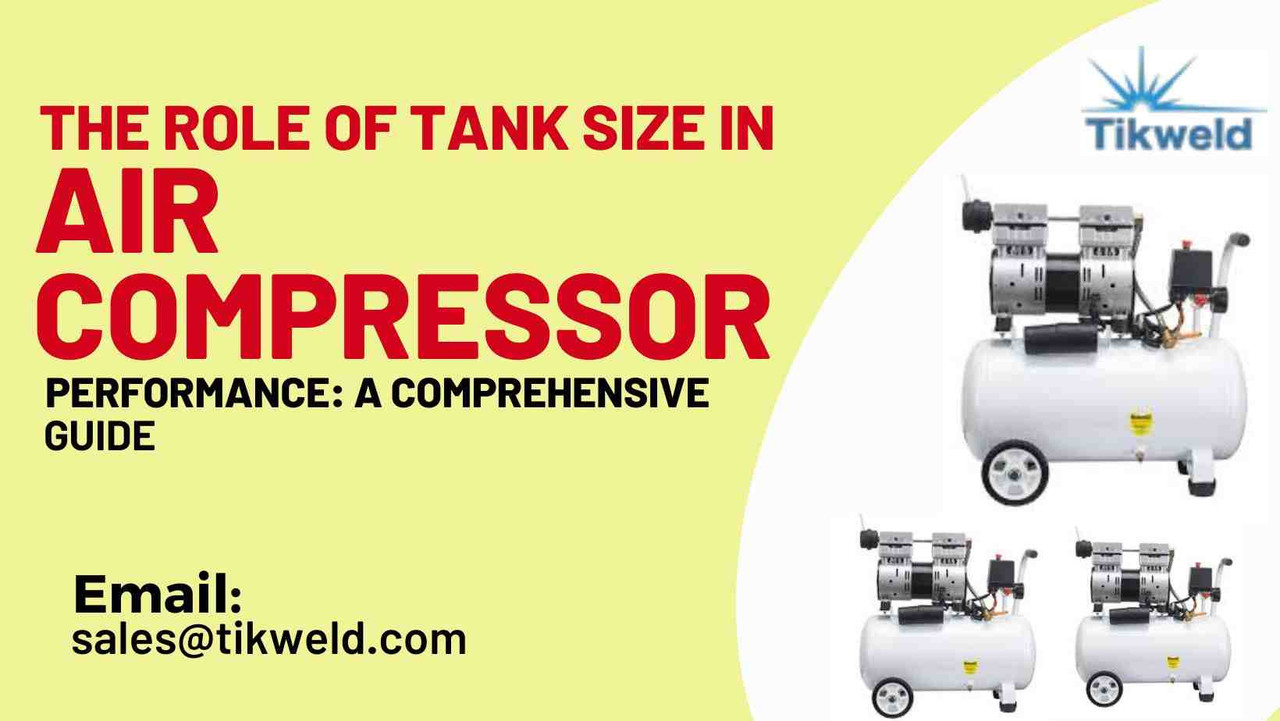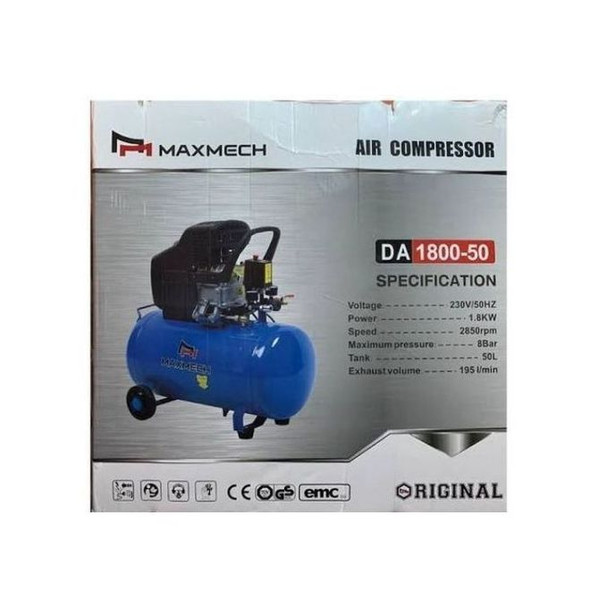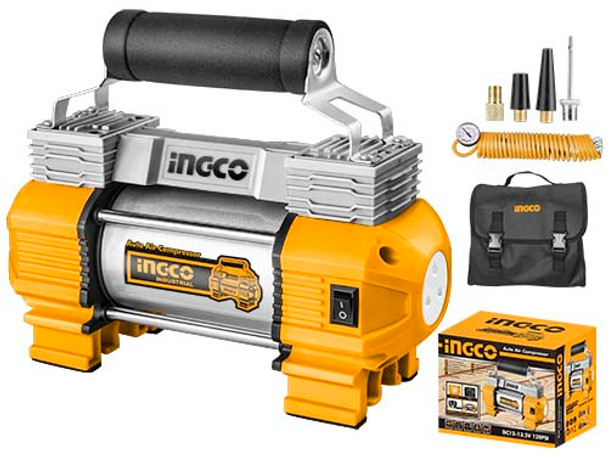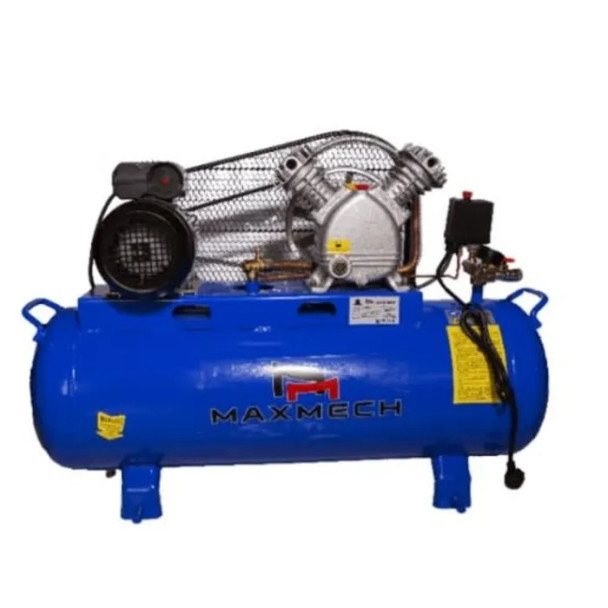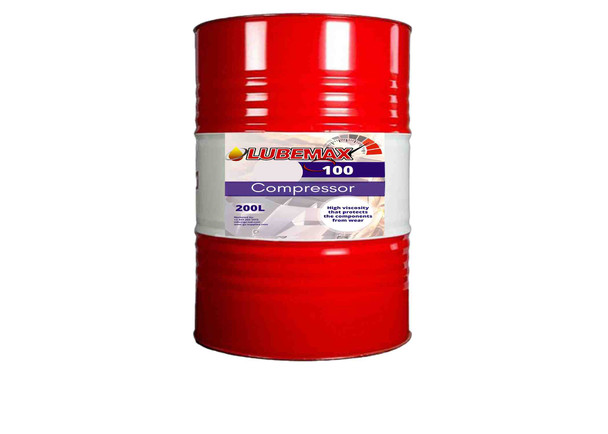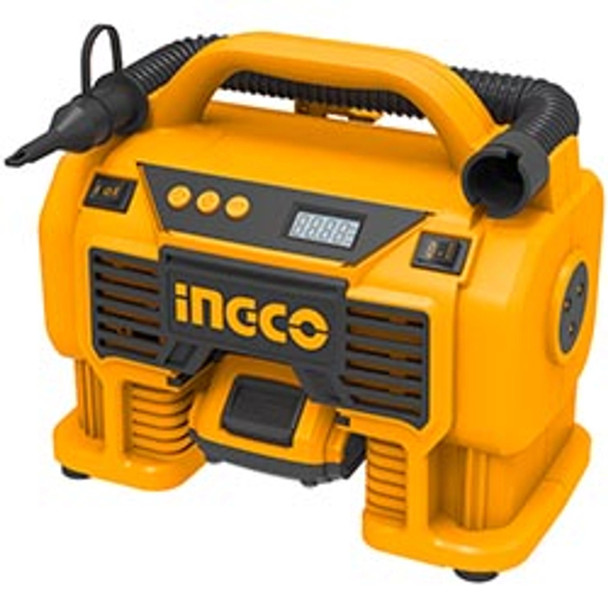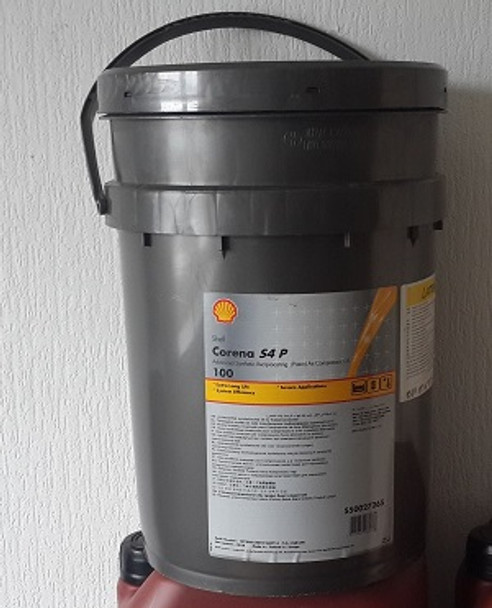The Role of Tank Size in Air Compressor Performance: A Comprehensive Guide
Key Takeaway
Introduction
Air compressors are essential machinery in various industries, from construction and manufacturing to automotive and woodworking. While many factors contribute to an air compressor's performance, the tank size is one crucial element often overlooked. The role of tank size in air compressor performance affects everything from air availability and pressure stability to energy efficiency and compressor longevity. While larger tanks often offer sustained performance and reduced cycling benefits, the ideal tank size depends on your specific application, space constraints, and usage patterns. By carefully considering your needs and understanding the implications of different tank sizes, you can select an air compressor that provides optimal performance, efficiency, and reliability for your operations.
This comprehensive guide will delve into the significant role that tank size plays in air compressor performance, helping you make informed decisions when selecting or upgrading your equipment.
 Maxmech Air Compressor Da 1800-50
Maxmech Air Compressor Da 1800-50
Understanding Air Compressor Tanks
Before we dive into the specifics of how tank size affects performance, let's first understand what an air compressor tank does and why it's essential.
Function of the Air Compressor Tank
The primary functions of an air compressor tank are:
- Air Storage: The tank stores compressed air, allowing for immediate use without waiting for the compressor to build pressure.
- Pressure Regulation: It helps maintain a steady pressure output, even when demand fluctuates.
- Moisture Separation: As air cools in the tank, moisture condenses and settles at the bottom, helping to provide drier air to your tools.
- Pulsation Dampening: The tank helps smooth out the pulsations created by the compression cycle, providing a more consistent airflow.
Types of Air Compressor Tanks
Air compressor tanks come in various shapes and sizes:
- Vertical Tanks: Take up less floor space, ideal for workshops with limited area.
- Horizontal Tanks: Provide better stability and are often used in portable compressors.
- Pancake Tanks: Compact and lightweight, suitable for small, portable compressors.
- Twin-Stack Tanks: Offer increased air capacity in a relatively compact design.
 Ingco AAC2508 Auto Air Compressor
Ingco AAC2508 Auto Air Compressor
How Tank Size Affects Air Compressor Performance
Now that we understand the basics, let's explore how tank size influences various aspects of air compressor performance.
1. Air Availability and Run Time
One of the most significant impacts of tank size is on air availability and run time:
- Larger Tanks:
- Store more compressed air, allowing for longer periods of continuous use.
- Ideal for applications requiring sustained airflow or tools with high air consumption.
- Reduce the frequency of compressor cycling, potentially extending the life of the motor.
- Smaller Tanks:
- Provide less stored air, suitable for intermittent use or tools with low air consumption.
- Cycle more frequently, which can be beneficial for certain applications but may increase wear on the motor.
2. Pressure Stability
Tank size plays a crucial role in maintaining stable pressure:
- Larger Tanks:
- Offer better pressure stability, as the larger volume of stored air acts as a buffer against pressure drops.
- Ideal for tools requiring consistent pressure, such as paint sprayers or sanders.
- Smaller Tanks:
- May experience more frequent pressure fluctuations, especially with high-demand tools.
- Can be sufficient for tools that are more tolerant of pressure variations, like nail guns or impact wrenches.
3. Recovery Time
Recovery time refers to how quickly the compressor can replenish the air in the tank:
- Larger Tanks:
- Take longer to refill from empty but require less frequent refills during use.
- Better suited for applications with periods of high demand followed by low demand.
- Smaller Tanks:
- Refill quickly but may need to do so more often during continuous use.
- Ideal for applications with short bursts of air usage followed by breaks.
4. Moisture Control
Tank size affects moisture accumulation and separation:
- Larger Tanks:
- Provide more time for air to cool and moisture to condense, potentially resulting in drier air output.
- May require more frequent draining to prevent excessive moisture buildup.
- Smaller Tanks:
- Less time for moisture separation, which may result in slightly more humid air output.
- Require less frequent draining due to lower overall moisture accumulation.
5. Noise Levels
Tank size can influence the noise produced by an air compressor:
- Larger Tanks:
- Generally result in less frequent cycling, potentially reducing overall noise levels.
- The compressor motor runs for longer periods but less frequently.
- Smaller Tanks:
- May lead to more frequent cycling, which can increase perceived noise levels.
- The compressor motor runs more often but for shorter durations.
6. Energy Efficiency
The relationship between tank size and energy efficiency is complex:
- Larger Tanks:
- Can improve efficiency by reducing the frequency of motor starts, which consume more energy.
- May lead to energy savings in applications with varying air demand.
- Smaller Tanks:
- Might be more energy-efficient for applications with low, consistent air demand.
- Can result in more frequent motor starts, potentially increasing energy consumption.
Matching Tank Size to Your Application
Choosing the right tank size depends on your specific needs. Here are some guidelines for different applications:
Light-Duty, Intermittent Use (2-6 Gallon Tanks)
- Ideal for: Inflation, small pneumatic tools, brad nailers
- Examples: DIY projects, hobby work, light automotive tasks
Medium-Duty, Regular Use (8-30 Gallon Tanks)
- Ideal for: Framing nailers, impact wrenches, small spray guns
- Examples: Construction sites, auto repair shops, woodworking
Heavy-Duty, Continuous Use (30-80 Gallon Tanks)
- Ideal for: Sanders, large spray guns, multiple tools simultaneously
- Examples: Industrial settings, professional paint shops, large-scale manufacturing
Industrial, High-Demand Use (80+ Gallon Tanks)
- Ideal for: CNC machines, large-scale pneumatic systems, multiple workstations
- Examples: Factories, industrial manufacturing, large construction projects
Factors to Consider When Choosing Tank Size
When selecting an air compressor tank size, consider the following factors:
- Air Consumption of Tools: Calculate the total CFM (Cubic Feet per Minute) required by your tools.
- Duty Cycle: Determine if you need continuous or intermittent air supply.
- Available Space: Consider the physical space where the compressor will be installed.
- Portability Requirements: Larger tanks are less portable but offer more air capacity.
- Power Source: Ensure your power supply can handle the compressor's requirements, especially for larger units.
- Future Needs: Consider potential future air demands and choose a tank that can accommodate growth.
 INGCO Lithium-Ion Auto Air Compressor INGCO CACLI2002
INGCO Lithium-Ion Auto Air Compressor INGCO CACLI2002
The Impact of Tank Size on Compressor Lifespan
Tank size can indirectly affect the lifespan of your air compressor:
- Larger Tanks:
- Reduce the frequency of motor starts, potentially extending motor life.
- May lead to less wear on pressure switches and other cycling components.
- Smaller Tanks:
- More frequent cycling can increase wear on motor and electrical components.
- May require more frequent maintenance due to increased operational cycles.
Maintenance Considerations for Different Tank Sizes
Proper maintenance is crucial regardless of tank size, but there are some size-specific considerations:
For Larger Tanks:
- More emphasis on regular draining to prevent excessive moisture accumulation.
- Importance of proper tank inspections due to higher air volume and potential pressure.
- Consider automated drain systems to manage moisture more effectively.
For Smaller Tanks:
- More frequent checks on motor and pressure switch due to increased cycling.
- Regular cleaning of intake filters to maintain efficiency with frequent motor starts.
- Monitoring of tank pressure more closely to ensure optimal performance.
Innovations in Air Compressor Tank Design
The air compressor industry continues to innovate, even in tank design:
- Composite Materials: Lighter, corrosion-resistant tanks for improved portability and longevity.
- Smart Tanks: Integrated sensors for real-time monitoring of pressure, temperature, and moisture levels.
- Modular Systems: Allowing users to add or remove tank capacity based on changing needs.
- Heat Recovery Systems: Utilizing the heat generated during compression for other processes, improving overall efficiency.
 Shell Corena S4 P100 compressor oil
Shell Corena S4 P100 compressor oil
Case Studies: Tank Size in Real-World Applications
Case Study 1: Auto Body Shop Upgrade
An auto body shop upgraded from a 30-gallon to a 60-gallon tank:
- Results: 25% reduction in compressor cycling, 15% increase in energy efficiency, and improved performance of spray painting equipment.
Case Study 2: Construction Site Portability
A construction company switched from a large stationary compressor to multiple smaller, portable units:
- Results: Increased flexibility on job sites, reduced downtime for air tool users, and improved overall project efficiency.
Environmental Considerations
Tank size can have environmental implications:
- Energy Consumption: Properly sized tanks can lead to more efficient energy use.
- Noise Pollution: Larger tanks may contribute to reduced noise due to less frequent cycling.
- Longevity: Appropriate tank sizing can extend compressor life, reducing waste.
- Refrigerated Air Dryers: Larger tanks may allow for more effective use of refrigerated air dryers, improving air quality.
Future Trends in Air Compressor Tank Technology
Looking ahead, we can expect to see:
- IoT Integration: Tanks with built-in sensors for predictive maintenance and performance optimization.
- Advanced Materials: Development of stronger, lighter materials for improved portability and durability.
- Variable Capacity Systems: Tanks that can adjust their effective size based on demand.
- Energy Storage Integration: Combining compressed air storage with electrical energy storage for improved efficiency.
Related Article:
Noise Levels in Air Compressors: Finding the Quietest Options
Conclusion
Ready to find the perfect air compressor with the ideal tank size for your needs? Look no further than Tikweld Products and Services. Our team of experts is ready to help you navigate the complexities of air compressor selection, ensuring you get the right balance of performance, efficiency, and reliability. Visit us at Tikweld.com or contact our sales team at sales@tikweld.com to discuss your specific requirements. Don't let the wrong tank size hold back your productivity – partner with Tikweld for air compressor solutions that drive your success!

